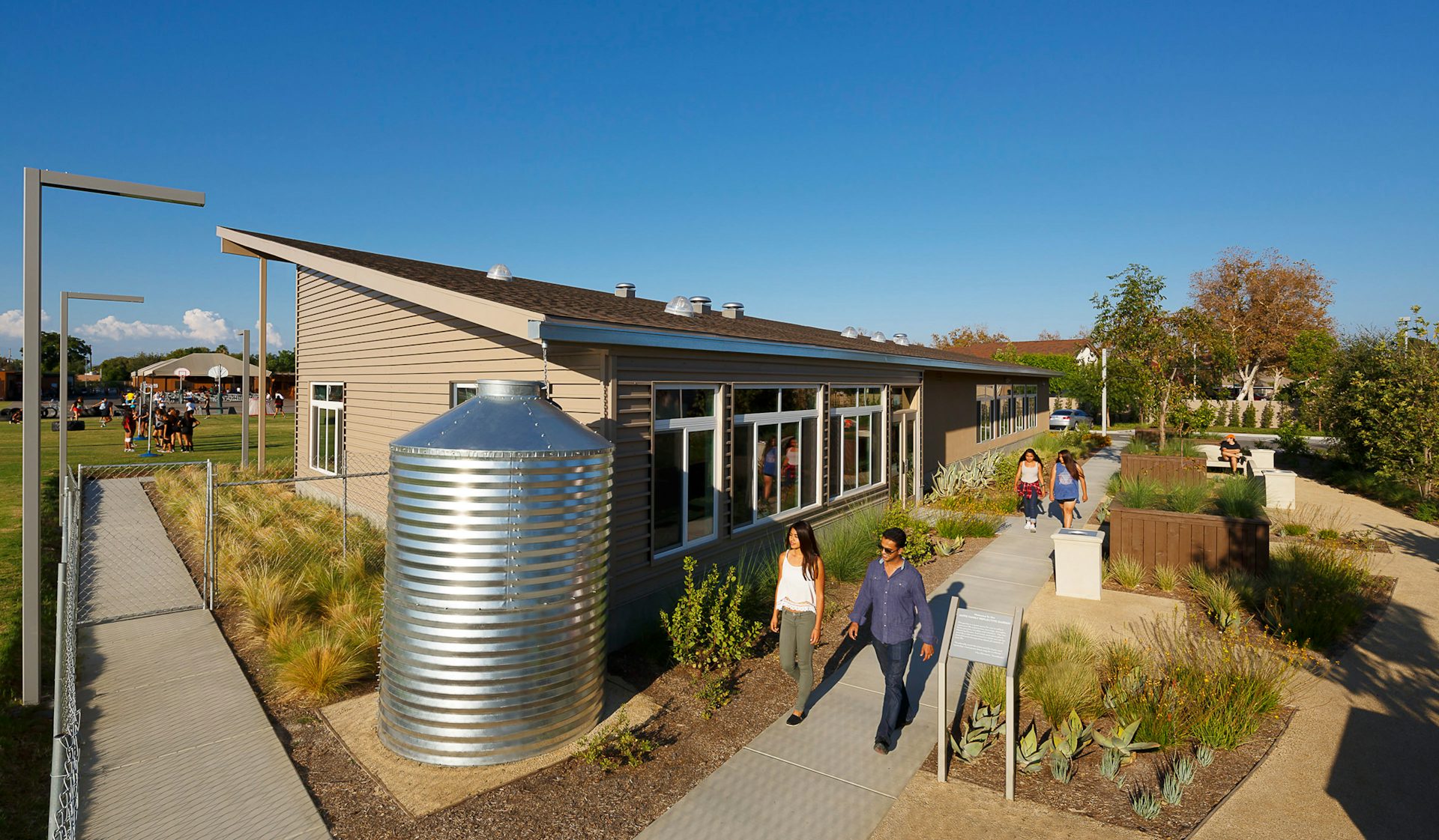Samueli Academy
Santa Ana, California
Project-based learning environments and flexible, multipurpose spaces support the goals of an innovative school addressing educationally under-served communities.
LPA designers worked with the Orangewood Foundation, a non-profit focused on working with foster youth, to develop a master plan for the Samueli Academy, a secure, 7.1-acre urban campus. The free, public charter high school is pioneering ways to help under-served youth feel like they belong and can meet academic standards.
The Samueli Academy focuses on small class sizes, a caring staff, a hands-on learning style, and engineering and design pathways to develop a unique and fulfilling high school experience. Highlights of the design include state-of-the-art, interactive classrooms with technology for all students, an expansive, multi-functional student union and theater, an extensive college, career and alumni resource center, and a new athletic gymnasium. With student safety a high priority, the school employs extensive security systems to provide excellent campus security.
Technology is integral to this adaptable, 21st-century learning environment. Every student is given a laptop and uses multiple interactive smart boards throughout the three-story, 31,000-square-foot academic building. Every floor includes four studios, a learning commons and a science lab. Flexible, multipurpose spaces, walls that open and furniture that rolls enhance project-based learning and hands-on experimentation. Sections of wall that students may “own” for their projects also foster communication skills in preparation for college admission and career building. From collaborative learning commons to benches in cozy corridor wall nooks, a variety of meeting spaces spark collaboration and encourage trust and peer relationships among the students.
Plans include a 24,000-square-foot residential building with patios and terraces, provide a safe, stable living environment for 54 students who need a stable living environment in order for them to excel. The adjacent 4,500-square-foot community building will provide a social and educational gathering space for students, especially those in residence, in addition to a wellness resource center.
The structures, with their exposed, steel-braced frames, are sustainable and educational. They are sheathed with vertical corrugated siding painted in varied warm hues, glass, smooth fiber cement panels, and plaster. Learning studios feature large operable windows, providing ample daylighting and ventilation, while sun shades protect windows facing south from glare and heat gain. Storm water runoff is collected and discharged into permeable parking-lot pavers at the site’s perimeter to recharge the groundwater.


































